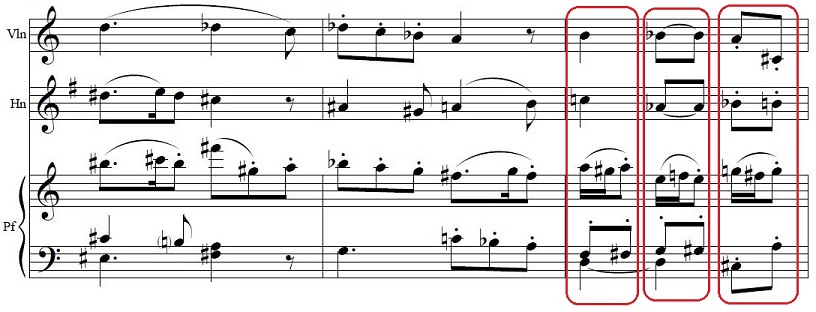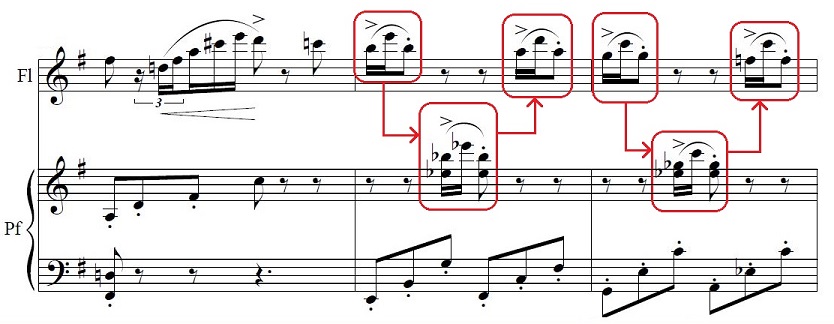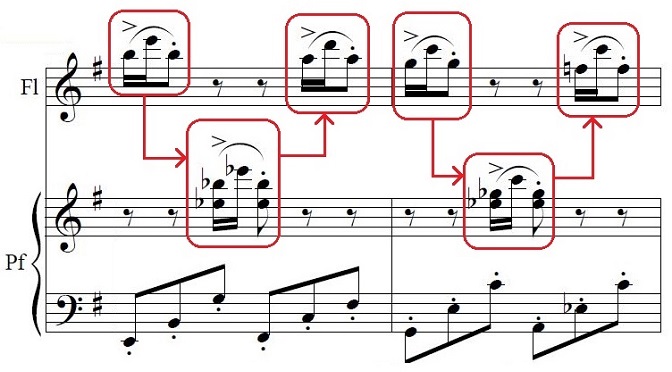Hemiola (Part II)
In my last blog post (Part I), I explained about the musical device known as hemiola, which is often used in pieces or passages where pulses — that is, beats or subdivisions of the beat — occur in groups of 3. The hemiola substitutes 3 groups of 2 pulses for 2 groups of 3 pulses, thereby creating a momentary disturbance in the rhythmic flow, a kind of puzzle for the ear of the listener. Since 3 x 2 = 2 x 3, however, the hemiola concludes on a normal boundary within the meter of the piece, and the puzzle is therefore solved in a musically and mathematically satisfying way. In this post I will examine additional examples from three of my compositions.
My Piano Sonata No. 4 contains several examples of hemiola, but perhaps the most interesting appears near the very end, where the piece breaks into a sprightly Presto in 3/8 meter.

The first six measures of the Presto establish the normal rhythmic flow for triplet meter, but then there suddenly appear three short phrases, each with a duration of two eighth notes, where the middle phrase straddles the bar line. The general impression is one of utmost freedom and uninhibited joy. This passage begins around 26:10 in the video below.
The second example is rather similar, coming from the finale of my Horn Trio. Here the meter is 6/8, which normally organizes itself around units equivalent to a dotted quarter note, but the three units of the hemiola have a duration of two eighth notes each, and they occur simultaneously in all three instruments (violin, horn and piano).

The main theme of this rondo movement seems to suggest a hunting call, and the hemiola here helps to convey the frenzied energy of the chase. This passage starts around 00:43 in the video below.
The final example comes from Variation II of my Variations for Flute and Piano. The meter is again 6/8, and the normal rhythmic flow, based on units equivalent to a dotted quarter note, has been established in the preceding measures.

The flow changes suddenly to a series of six shorter phrases, with a duration of two eighth notes each, which are passed back and forth in imitation between the flute and the piano, sharing the same high register. Since there are 6 of these shorter units instead of 3, this example might be thought of as a double hemiola. Notice, however, that the patterns in the left hand of the piano part are based on groups of three eighth notes, thus maintaining a reminder of the underlying normal 6/8 flow. The double hemiola lends a certain playfulness to the passage. It occurs around 1:44 in the video below, which is based on a recording I made with flutist Leslie Lewis.

